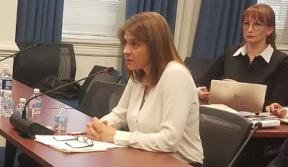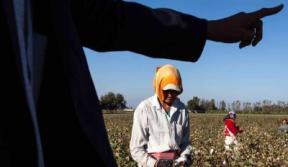Agriculture, which is accountable, incredibly, for some 170 million child
laborers, is classed by the International Labor Organization as one of the
three most dangerous sectors in the world in which to work. In almost every
continent - across swathes of Asia, extending into Europe, and in pockets of
Latin America and Africa - children, many of them under 10, are out of school
in all-weather conditions, exposed to dangerous pesticides and other health
risks. Because agriculture tends to be less regulated than other industries,
child laborers have little access to legal mechanisms.
These children and their daily realities are far from sight for most of us,
but we have a responsibility to know about them. And let's not be under any
illusion, there are many people who are informed, including many of the
companies who supply us with our cotton and clothing and often, governments.
BBC Newsnight
recently shed light on state-sponsored child labor in Uzbek cotton fields. As
British children board school buses to learn, in countries like Uzbekistan they
spend long days picking cotton. Warm classrooms and three square meals are a
given for most British children, yet thousands of Uzbek children - some as
young as seven - endure cold and rain without adequate clothing and
nourishment, to help make the clothes on the backs of their European
counterparts.
Uzbekistan can be singled
out for its use of forced labor, but the problem is hardly negligible in a
number of other major cotton-producing and exporting countries like China, Pakistan and India.
Bad enough that children are being exploited and abused, but our culpability in
the practice compounds it: many of these countries export clothing and textiles
to the EU, with the UK among the EU's largest importers.
The argument is put forth that children working helps to alleviate poverty
in some of the world's least developed countries - a better alternative to
going hungry. Undeniably, poverty feeds into the complex web of circumstances
that lead children to the cotton fields. Children can be required to support
struggling families; parents with few employment opportunities can't afford to
send children to school.
The reality is, however, that many of the more powerful actors in the supply
chain, including governments, manufacturers, cottonseed companies, retailers
and consumers, are unfairly profiting from the exploitation of vulnerable
families and children. The cotton fiber and seed industries are worth billions
of dollars, with farmers receiving low prices for their product, which is then
sold on the commercial market for several times higher. High-street brands earn
extraordinary annual profits, with some exceeding £293m. Often, UK consumers
being paid a decent wage.
Whatever the financial circumstances, children who are obliged to work are,
at the very least, entitled to fair, safe and decent working and living
conditions, and protection from abuse. We would never conceive of conditions
where our own children are required to work all year round, away from home, and
at risk of physical, psychological and sexual harm. So why do we tolerate it
for children in the rest of the world?
By purchasing cotton clothing that fails to carry a guarantee of
no-child-labor, we are part of the problem, and our demand for cheap clothing
is among the strongest forces driving it.
Companies have a responsibility to know how the products that reap profits
for them are being made. Consumers, equally, should know where the product they
are buying and wearing comes from, so they can make more informed choices. We
need to consider that if a product cost pennies, someone down the line is
paying for it - through forced or child labor, pesticide poisoning or other
physical abuse.
Companies can no longer shirk responsibility, or hide behind excuses like
the "opacity" of the supply chain. It is entirely possible to track
the origin of cotton. If actors in the supply chain do not know about the
abuses at the earliest stages of the production of the goods they profit from,
it is because they don't want to find out.
As consumers, our purchasing power can be worth more than our voting. Labels
identifying where our clothing was made aren't enough: manufacturers and
retailers need to develop a labeling system that identifies the source of the
crop - given that cotton, from seed to shirt, passes through many hands - and
guarantees the absence of child labor (or other abuses) from all stages of the
supply chain.
In the midst of the Christmas shopping frenzy, we need to apply our
leverage, and make a commitment not to overlook children's basic rights, no
matter where in the world.

